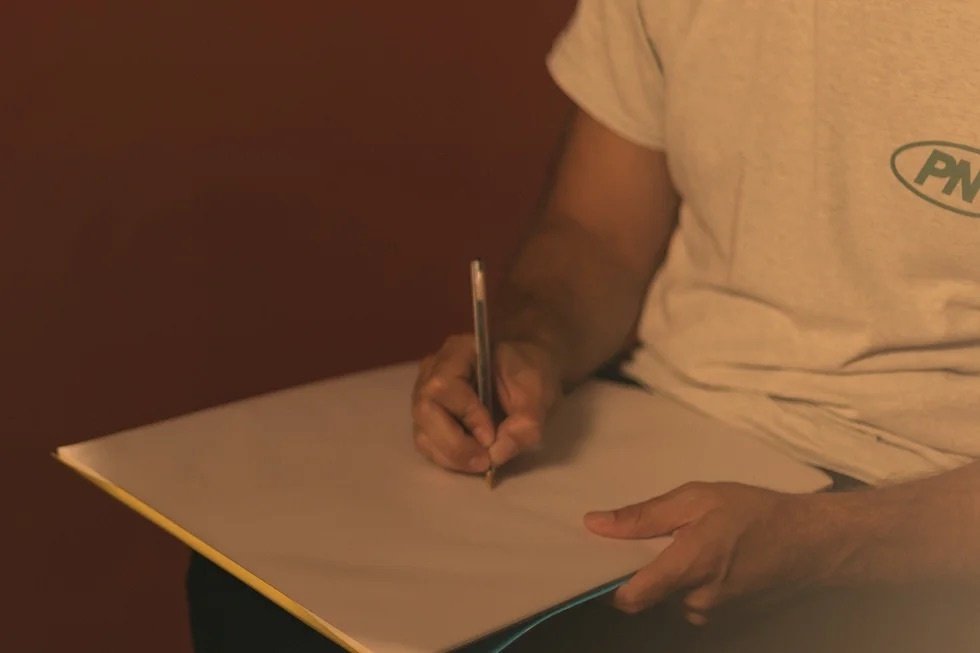The language of the job hunt: resumes and job applications
Sep 07, 2022 - updated Apr 24, 2023
4 mins


Writer
So you’ve decided to apply for a new role—good for you! You spruce up your resume and get ready to send it off, only to learn you need to complete a job application too. Confusion sets in as you find yourself doubling your efforts, wondering why both are necessary. Well, as culture fit becomes more critical in the workplace and competition rises, many employers want to better understand applicants beyond their work life and hard skills. Larger companies may also be seeking ways to sort through high application volumes and simplify or automate processes. Enter: the job application.
But what exactly is the difference between a resume and a job application? Why would a company ask for one over the other–or even both–and how can you ensure you stand out? Let’s find out.
What is a job application?
A job application is a standard form with questions or fields deemed necessary by a company to review candidates. It will often request the same information from every potential hire, such as contact information, past work experience, education, and references. However, not every company will ask you to complete a job application; sometimes just a resume will suffice. So what are some reasons a company would require one?
Marianne Encina, a recruiter at Shopify and co-founder of 3Skills, a community that teaches job seekers how to communicate their value to employers and build careers they are proud of, says, “a company might use a job application to have one clear standard to assess all applicants. This can be beneficial when the goal is solely to compare experience, skills, and education.”
However, the standardization of job applications also brings about concerns regarding DEI initiatives. Encina notes, “[Job applications] can be problematic since applicants will all have different backgrounds that will fall outside this standard and might therefore be automatically and unfairly rejected.”
That said, if a company does ask you to submit a job application, it is essential that you complete it in full. In the United States, candidates are required to list all former employers as requested on a job application and to fill it in honestly—you don’t want to get caught lying should the employer run a background check.
What is a resume?
A resume is a document that outlines your accomplishments, skills, and background, typically as they relate to your career and education. Resumes can also include personal information, such as hobbies, interests, and volunteer time, providing a prospective employer with more information about who you are and how you spend your time outside office hours.
A resume is your opportunity to showcase and highlight your unique talents and personality. While there are certain things that will double up on your resume and job application—such as your duties and responsibilities with previous employers—there’s lots of room for creativity.
One tip Encina suggests is tailoring your resume to the company’s brand by using their colors and fonts or getting inspiration from their products. “If you are interviewing with Google’s Search Team, for example, you could have each role in your resume replicate Google search results,” says Encina.
But it’s not all about aesthetics. “Content will always be more important than any color or font. A tailored resume with metrics that address requirements and responsibilities for the role should be the standard; aesthetics are a bonus.” Encina says. So what’s the bottom line? Make your resume enticing. “Ultimately, the goal is to extend the amount of time the recruiter or hiring manager spends reviewing your resume.”
What should you do if a company asks for both?
If a company asks for both, how do you ensure you don’t waste your or the recruiter’s time? While it can be tempting to keep one standard resume handy for any job that piques your interest, especially when applying to several different roles, it’s good practice to tailor your resume for each opportunity.
If a company asks you to complete a job application and a resume, avoid repeating the same information. “You might consider using that extra space to speak about specific projects that are relevant to that role,” notes Encina.
Should you send a resume if the company only offers a job application?
According to Encina, the answer to this question is: it depends. “If you have a tailored resume ready to be submitted that would only make your application and your candidacy stronger, I would go ahead and submit that too,” she says.
“But really, the question here should be redirected to the company: is every step of your process intentional and candidate-centric? Are the instructions clear on what needs to be submitted? Are they deducting points for anyone who didn’t submit a resume and cover letter, although there were no instructions to do so? As a candidate, your goal is to reflect that you are the most employable out of the candidate pool. A company’s goal should be to provide a clear recruitment process and expectations.”
Key takeaways: what’s the difference between a resume and a job application?
A job application is a form created by a company with fields that a candidate must complete in full. These fields typically include contact information, past work experience, education, and references. The application is the same for every potential candidate, providing a standardized way for a company to assess applicants.
Ensure you complete all sections as required by the job application. You must fully disclose all past employers when requested via a job application. Some companies may even perform a background check to confirm.
A resume outlines your accomplishments, skills, and background. It’s also your opportunity to showcase your unique experience, creativity, and other relevant information that could make you a front-runner for a position.
Clearly read a company’s application instructions; if they are unclear, don’t hesitate to ask for more information.
When in doubt, go the extra mile and submit a resume in addition to a job application, even if it’s not specifically requested. Find the appropriate company contact so you know it gets into the right hands.
Photo: Welcome to the Jungle
Follow Welcome to the Jungle on Facebook, LinkedIn, and Instagram and subscribe to our newsletter to get our latest articles every week!

More inspiration: Creating a winning job application
Create a winning job application with these tips on resume and cover letter writing, job application strategies, and job application best practices.

Resume writing: 7 details to include before you shoot your shot
You've found the ideal job ad and are ready to apply—that's great! But before you hit "send," make sure you've got these key details on your resume.
Feb 07, 2023

Writing a cover letter: ditch the dull templates!
How many times have you searched "cover letter templates" on Google? Well, it's time to stop! Use your voice and share your originality.
Jul 12, 2022

The power of words: elevating your resume to promote your experiences
Good words are worth much and cost little. So how can you use them effectively on your resume to catch the attention of the recruiter?
Jun 30, 2022

Maximizing your resume's impact: aligning your skills with job descriptions
By tailoring your resume and cover letter to each job offer, you're more likely to attract the recruiter's attention.
Jun 23, 2022

Crafting a compelling cover letter for hidden job opportunities
You've found your dream company. But there are no open positions. Should you give up? No! Use these tips to write a strong unsolicited cover letter.
Jan 07, 2020
The newsletter that does the job
Want to keep up with the latest articles? Twice a week you can receive stories, jobs, and tips in your inbox.

Looking for your next job?
Over 200,000 people have found a job with Welcome to the Jungle.
Explore jobs